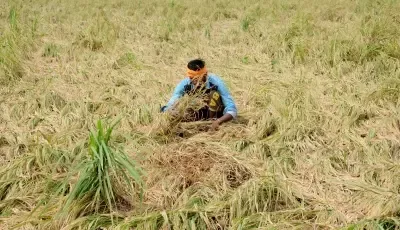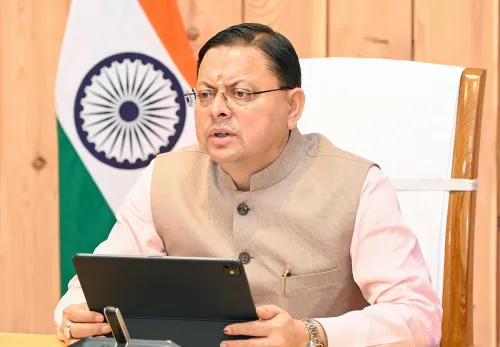Can Paddy Straw Be Transformed into Biogas and Bioethanol Worth Rs 1,600 Crore?

Synopsis
Key Takeaways
- Paddy straw can be converted into valuable biogas and bioethanol.
- This transformation can save Rs 1,600 crore in energy imports.
- Investment of Rs 37,500 crore is anticipated for CBG projects.
- Innovative technologies can reduce pollution caused by straw burning.
- Paddy straw has potential applications beyond energy, including high-value products.
New Delhi, Nov 23 (NationPress) The 7.3 million tonnes of paddy straw currently set ablaze by farmers can be transformed into compressed biogas and bioethanol, potentially saving Rs 1,600 crore in foreign exchange on energy imports while also reducing pollution, as per a statement from the Indian Biogas Association (IBA) on Sunday.
This initiative is expected to draw investments of Rs 37,500 crore and lead to the establishment of 750 CBG projects across the country by 2028-29.
Importantly, this represents a strategic shift towards LNG import substitution, ensuring savings in valuable foreign currency while enhancing energy security through domestic sources, the statement remarked.
The latest anaerobic digestion techniques can effectively convert this agricultural waste into Compressed Bio-Gas (CBG), which can replace imported natural gas, the statement highlighted.
In addition to energy, paddy straw is highly suitable for bioethanol production due to its 40 percent cellulose content, it further stated.
This has the potential to generate import savings of Rs 1,600 crore, according to the IBA.
“The parallel objectives of Sustainable Aviation Fuel include achieving one percent blending for international flights by 2027, further expanding the bioeconomy scope,” stated IBA Chairman Gaurav Kedia.
Even the residual 20 percent lignin, a complex organic polymer found in plant cell walls, can be utilized to produce high-value items such as polymers, activated carbon, graphene, and resins, the statement noted.
The traditional view of paddy straw as waste signifies a lack of creative thinking.
IBA also pointed out that burning a tonne of straw emits approximately 1,460 kg of carbon dioxide, nearly 60 kg of carbon monoxide, and 3 kg of particulate matter into the atmosphere.
Instead of allowing this harmful emission, India can harness innovative technologies to convert straw into valuable resources, it emphasized.
Mature urban trees have been shown to absorb as much as 22 kg of CO2 annually while filtering hazardous particulate matter.
One of the most accessible solutions could be strategic plantation efforts in and around northern Indian cities, particularly along highways, which can shield us from pollution fluctuations with a green barrier, the statement added.
Equal consideration should also be given to the weather-moderating benefits of this natural shield, which can help mitigate the urban heat island effect throughout the year.
It highlights that cities like Delhi have already demonstrated what is achievable, with over 2.5 million saplings planted in 2023 alone.
Integrating Miyawaki forests in degraded urban areas with green corridors along highways and community-led “adopt a tree” programs would create a robust natural defense against pollution, the statement concluded.









